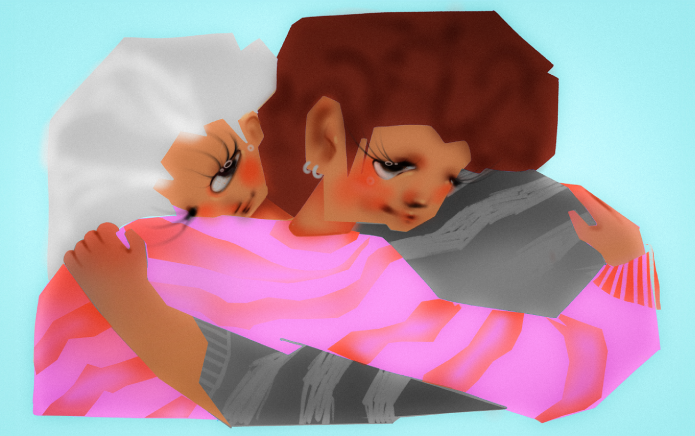Still, as a bored teen, I did what most 14-year-olds did at the time – I created a Twitter account. My tech-anxious Asian parents knew the quirks of MSN and kept me off the grid when it came to getting a Facebook account (honestly, I’m glad), but they had no idea about the shiny new beginnings of Twitter and Tumblr.
Back then, the internet was different. As a part of the ‘97 generation, aka the Gen Z-Millennial limbo age, there was still an exciting newness about the internet, a kind of digital escape. We would share sketchy LimeWire downloads, burn away hours on YouTube at friends’ houses and battle mates for high scores on Miniclip after school. The separation between real life versus phones and computer games felt more stark.
At that age, my friendship circles were more immediate, too. There was always someone around: a combo of schoolmates, kids my age on my street and many, many cousins. But despite all the animated card games during lunch or rounds of texts in the evening, I wasn’t getting the closeness I wanted – especially as I got older. So, I looked online instead.
It was mid-summer in 2015 and a Vans Warped Tour art contest, asking for submissions of original poster designs, flashed up on my Twitter feed. At the moody age of 18, I had a passion for two things: emo bands and ill-advised impulsivity. I couldn’t get enough of a creative competition that would give you a shot at designing something for the ultimate pop-punk tour and I knew someone else who might feel the same too.
Well, did I actually know her? No, but El and I were Twitter mutuals, and that was enough of a reason to shoot off a clumsy, nervous message asking what she thought about the event. And as it turned out, she was into applying and brainstorming ideas together. She shared her ambitious creative design plans in my DMs. Meanwhile, I relished in the fact that I had made my first internet friend.
El, however, was different. We talked about our favourite rockstars, Taylor Swift albums, movies and more constantly. Then, one day, she told me she was gay. While it would later transpire that many of my IRL friends were part of the community, at the time, I didn’t know any LGBTQIA+ people. El’s admission was my first direct brush with queerness.
According to Rainbow Britain’s 2022 report, 39% of the public have a personal friend or family member who identifies as lesbian or gay. However, this wasn’t the case for me. My strict religious upbringing had instilled the idea that queerness was wrong. I didn’t grow up taught about LGBTQIA+ history or have any notable queer role models, unless you count hearing Queen being played around the house. Music and my mates online served as my gateway into a culture and community I was just starting to learn about.
My friendship with El continued and social media – Twitter, Tumblr, Snapchat – became a place where we could talk freely and I could subtly learn about queer culture. It was during 3am chats with El (and, later, others) that I learned more about myself. The unease about feeling different, which I soon came to understand were anxieties about being queer, subsided as I continued to find friends my age who knew how I felt.
